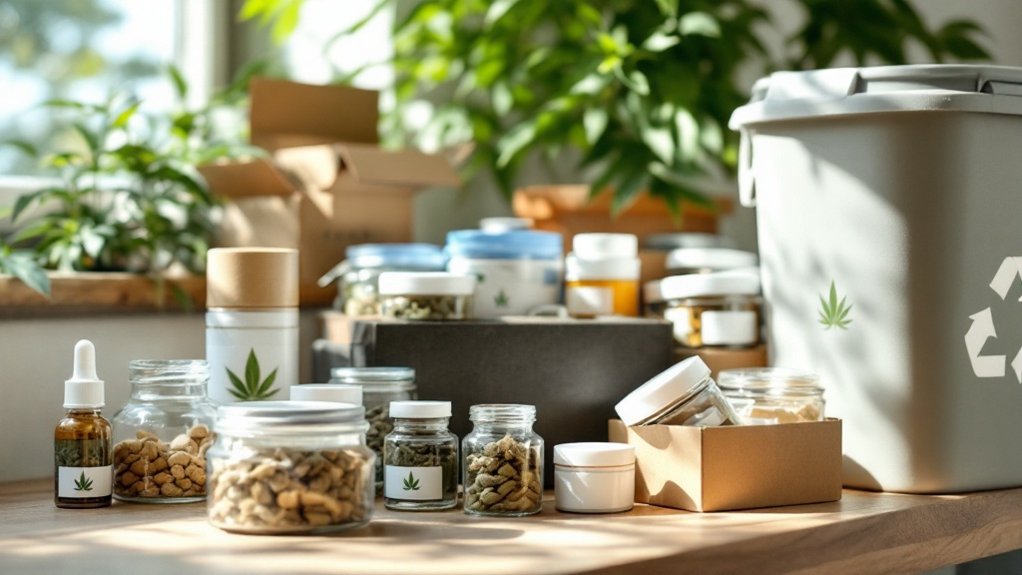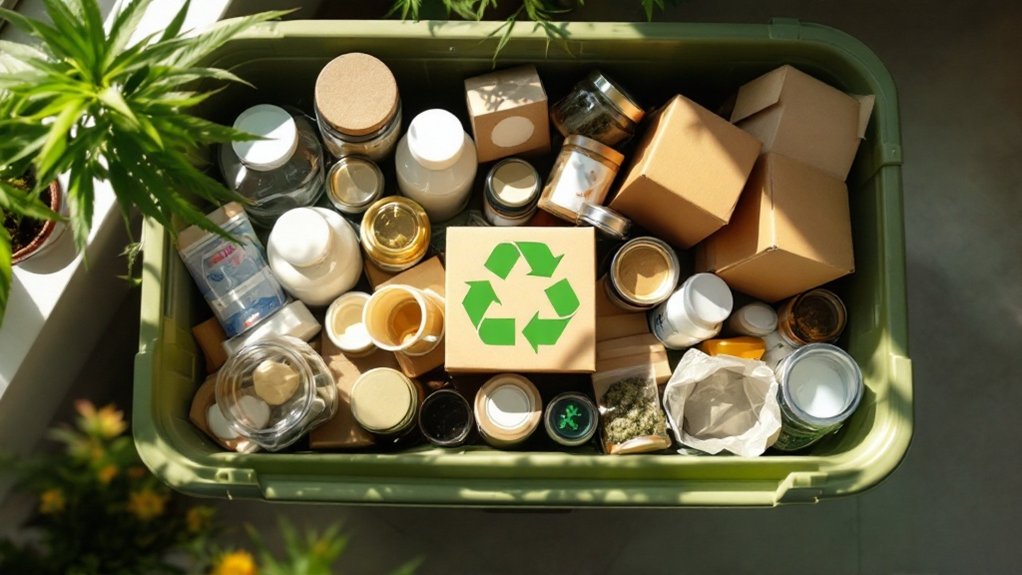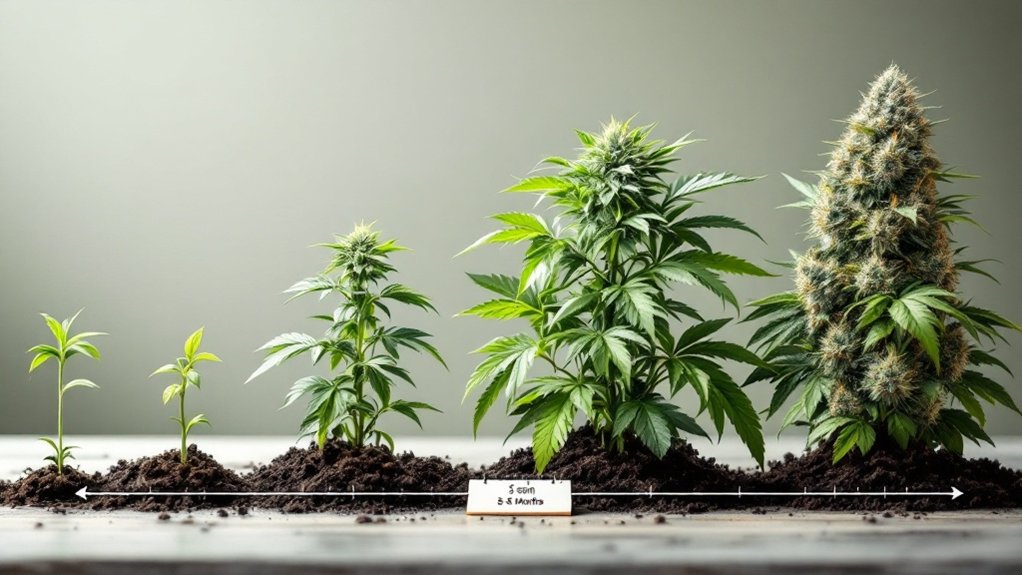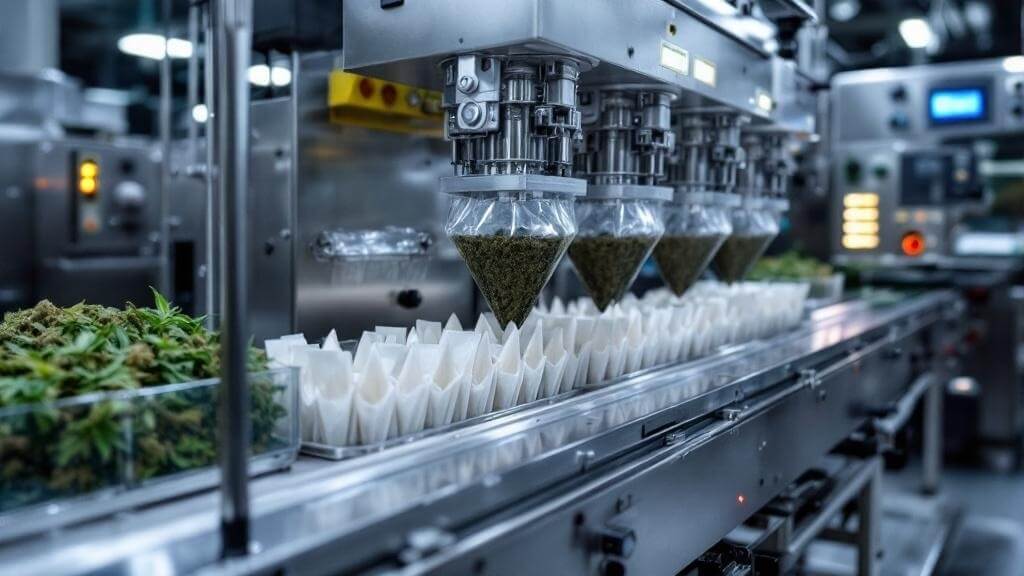Proper recycling of cannabis packaging presents unique challenges due to regulatory requirements and material complexity. Most packaging combines plastic, glass, metal, and paperboard that require specialized handling beyond standard recycling streams. Consumers should check for specialized cannabis packaging recycling programs like ReDram that utilize dedicated kiosks for processing these materials. Plant-based plastics and reclaimed materials offer sustainable alternatives for environmentally conscious users. Understanding the distinction between theoretical recyclability and practical implementation reveals the importance of industry-specific waste management solutions.

While the cannabis industry has experienced substantial growth across North America, it has simultaneously generated an alarming volume of plastic waste, with estimates suggesting that over 13 million pounds of cannabis packaging ended up in landfills during Canada’s first year of legalization alone.
The scale of this environmental challenge becomes more apparent when considering that for every 3.5 grams of dried cannabis sold, approximately 70 grams of plastic packaging accompanies it. This disproportionate ratio highlights the pressing need for improved recycling and disposal methods within the industry. Consumers have expressed considerable dissatisfaction with excessive plastic packaging, with 73% of users rating it as a significant concern.
Most cannabis packaging materials—including plastic, glass, metal, and paperboard—are theoretically recyclable or compostable. However, practical implementation faces significant obstacles. Nearly half of consumers incorrectly assume that most plastic cannabis packaging can be processed through standard recycling streams. The reality is more complex, as current recycling infrastructure is often inadequate for properly handling these specialized materials, which is a challenge faced by many cannabusinesses.
Recyclable in theory, cannabis packaging faces practical hurdles despite widespread consumer misconceptions about its processability.
Implementing a milkman model of packaging reuse could significantly reduce single-use packaging needs. Industrial composting facilities for cannabis packaging are virtually nonexistent in most regions.
Regulatory requirements further complicate recycling efforts. Cannabis packaging regulations frequently mandate excessive packaging while simultaneously creating barriers to proper recycling programs. This regulatory contradiction has led to a disconnect between sustainability goals and practical waste management.
The cannabis industry processed nearly 400 million units of pre-rolls in 2024 across the United States, generating substantial packaging waste that existing systems struggle to process efficiently.
Several sustainable material alternatives offer promising solutions to reduce environmental impact. Plant-based plastics, reclaimed materials, ocean-bound plastics, and biobased resins provide more environmentally conscious options compared to traditional petroleum-based packaging.
The shift from virgin petroleum-based resins to recycled content represents a vital step toward sustainability in the industry.
Circular economy principles suggest that all plastic packaging should be designed for complete reuse, recycling, or composting. Innovative recycling initiatives, such as the ReDram Program, utilize specialized kiosks to facilitate the recycling and de-labeling of cannabis packaging.
These programs guarantee materials reach appropriate end markets rather than landfills and provide retailers with accurate data on their recycling participation and environmental impact.
For the cannabis industry to address its packaging waste challenges effectively, a thorough approach is necessary. This includes redesigning packaging specifically for circularity, updating waste management infrastructure, and implementing specialized recycling programs that can properly process these materials.
The collective efforts of manufacturers, retailers, consumers, and regulatory bodies will determine the success of cannabis packaging recycling initiatives.
Frequently Asked Questions
Are There Cannabis-Specific Recycling Programs Available in My Area?
Cannabis-specific recycling programs are available through several routes in select regions.
Dispensaries like Curaleaf in New York and Tree House operate collection systems that accept various packaging materials.
TerraCycle has partnered with cannabis companies to process otherwise difficult-to-recycle items.
Availability varies considerably by state and local regulations.
To determine specific programs in a particular area, consumers should contact local dispensaries directly or check TerraCycle‘s website for participating locations and accepted materials.
Can Cannabis Packaging Be Composted?
Some cannabis packaging can be composted, but it depends on the material.
Standard plastic containers aren’t compostable, while newer PHA-based packaging biodegrades within 20 days in industrial facilities.
Hemp-based plastics require higher temperatures than home composting provides, necessitating industrial processing.
Compostable alternatives are increasingly available as cannabis brands respond to environmentally-conscious consumers.
However, many packaging components contain mixed materials, so consumers should verify compostability claims before disposal.
What Symbols Indicate Recyclable Cannabis Containers?
Recyclable cannabis containers are primarily identified by the “chasing arrows” triangle symbol with a numeric code inside.
Containers marked with #1 (PET) and #2 (HDPE) are most widely accepted by recycling programs nationwide.
Glass jars, while typically lacking numeric codes, are universally recyclable when clean.
Rigid plastic containers often feature the triangular symbol, whereas Mylar bags rarely display recycling markings as they frequently require specialty recycling programs rather than standard curbside collection.
How Should I Clean Containers With Residual Product?
Containers with residual cannabis product should be cleaned using a multi-step approach.
First, soaking in warm, soapy water loosens sticky residues.
Isopropanol or ethanol effectively dissolves concentrates, while alkaline detergents containing sodium hydroxide provide superior cleaning efficiency.
Multiple rinses with clean water are essential to remove all chemical residues.
Proper ventilation during cleaning and wearing gloves prevents exposure to potentially harmful solvents.
Do Dispensaries Offer Package Return Incentives or Programs?
Some dispensaries do offer package return incentive programs, though these aren’t yet industry-wide standards.
Participating retailers typically provide direct product discounts, such as deeply discounted pre-rolled joints for each qualifying package returned.
Tree House dispensary in Massachusetts exemplifies this approach, having collected over 6,000 returned packages through their program that offers $4 pre-rolls.
These initiatives are more common in mature cannabis markets, where businesses use them to enhance sustainability efforts while building customer loyalty.









